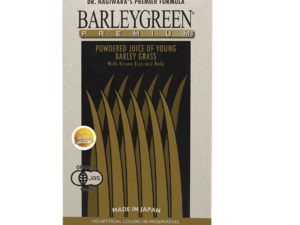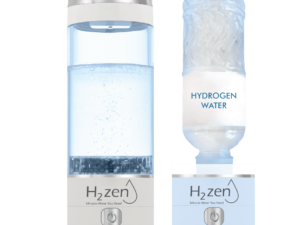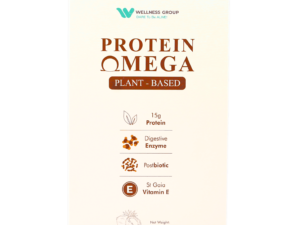Surprising fact: a pilot trial found about a 4% mean increase in telomere length after six months of hydrogen-rich water intake in older adults, a result that stopped many readers in their tracks.
The question Malaysians ask today is simple: Is hydrogen water anti-aging? This short guide opens that conversation without hype. It explains how molecular hydrogen can act as a selective antioxidant, supporting cellular defense systems like Nrf2/HO-1 and lowering harmful radicals.
Readers will get a clear view of early human signals, such as telomere changes and shifts in oxidative stress markers, alongside results from reviews that cover exercise, heart, liver, brain, and fatigue outcomes.
Wellness Group aims to be practical. Quality, dosing, and generation methods matter for real-world use. For tailored advice in Malaysia, reach WhatsApp +60123822655 during business hours: Mon–Fri 9:30 am–6:30 pm; Sat–Sun 10 am–5 pm.
Key Takeaways
- Early human data show promising telomere and oxidative stress signals, but more trials are needed.
- Molecular hydrogen works via selective antioxidant pathways and may support cellular stability.
- Quality and dosing of hydrogen-rich water influence potential benefits.
- Systematic reviews report benefits across multiple health areas, with cautious interpretation.
- Wellness Group offers local guidance in Malaysia via WhatsApp during listed hours.
Ultimate Guide Overview: Is hydrogen water anti-aging for people in Malaysia today?
This guide gives Malaysians a clear, practical look at whether enriched drinking solutions can help support healthy aging. It focuses on current human data, likely mechanisms, and what matters for real-life use in Malaysia.
User intent and what this guide covers
The reader wants a concise, evidence-based article that reviews study results and practical steps. The scope includes mechanisms such as oxidative stress and inflammation, trial highlights, organ-specific outcomes, safety, dosing, and product choice. It also explains how product quality and timing affect potential results.
Quick takeaways before the deep dive
- Early signals exist: small trials and reviews report changes in oxidative stress markers and a pilot telomere signal, but larger studies are needed.
- Most promising areas: metabolic syndrome markers, endothelial function, exercise fatigue, liver enzymes, and mood trends.
- Practical note: individual responses vary with diet, activity, and health; this is an adjunct strategy, not a cure-all.
- Local support: Wellness Group offers personalised guidance on WhatsApp: +60123822655. Business hours: Mon–Fri 9:30 am–6:30 pm; Sat–Sun 10 am–5 pm.
| Outcome | Human signals | Strength of evidence | Practical note |
|---|---|---|---|
| Oxidative stress | Reduced markers in small trials | Moderate (small RCTs) | May support cellular defense |
| Exercise & fatigue | Improved endurance, lower lactate | Promising (athlete and clinical studies) | Time intake around workouts |
| Cardio & metabolism | Lipid and endothelial trends | Low–moderate | Best as part of lifestyle changes |
| Mood & QoL | Small improvements reported | Low (pilot studies) | May aid quality of life, not a stand-alone treatment |
What is hydrogen water and how is it made?
Before choosing a product, it helps to know how infused H2 solutions are produced and stored. In simple terms, hydrogen-rich water is ordinary drinking water with dissolved molecular hydrogen gas. Because H2 is tiny, it diffuses fast and can reach tissues more readily than many solutes.
Hydrogen-rich water vs. regular and alkaline water
Key differences: the active agent in alkaline-electrolyzed solutions is the dissolved H2, not pH alone. Regular tap water lacks this added gas. The proposed benefit comes from selective antioxidant action that targets highly reactive species without bluntly suppressing all free radicals.
- Common production methods in Malaysia: home generators, pressure infusion devices, and dissolvable tablets that release H2 on contact.
- Electrolyzed models owe therapeutic signals to dissolved molecular hydrogen rather than alkalinity.
- Practical reality: dissolved hydrogen dissipates with time, warmth, or agitation—so timely drinking and proper storage matter.
- Many users prefer portable tablets or sealed bottles for travel and gym sessions to keep levels consistent.
Shopping tip: check device specs for dissolved H2 levels and safety certifications. For personalised guidance on generators, tablets, and reliable brands in Malaysia, message Wellness Group on WhatsApp: +60123822655.
How aging works: oxidative stress, inflammation, and cellular hallmarks
Aging unfolds through multiple biological pathways that interact over decades. These pathways include DNA instability, telomere shortening, and failing repair systems that together shape function and frailty.
Oxidative stress and reactive oxygen species in aging
Oxidative stress occurs when reactive oxygen and nitrogen species outpace defense systems. This imbalance causes lipid and DNA damage, and common markers include 8-OHdG and MDA/TBARS.
From inflamm-aging to mitochondrial decline
Inflamm-aging is chronic, low-grade inflammation tied to higher frailty and disease risk. Mitochondria are a major ROS source, so mitochondrial decline magnifies cellular stress and functional loss.
The hallmarks of aging that hydrogen may influence
The nine hallmarks—genomic instability, telomere attrition, epigenetic change, loss of proteostasis, nutrient-sensing shifts, mitochondrial dysfunction, senescence, stem cell exhaustion, and altered communication—overlap with redox and inflammatory pathways.
Reactive species also act as signals, so selective approaches matter. Early data suggest molecular hydrogen targets harmful radicals while sparing signalling ROS, and pathways like Nrf2/HO-1, NF-κB, and NLRP3 may link to multiple hallmarks.
For Malaysians seeking practical options and local guidance on reliable products, Wellness Group offers local guidance on hydrogen solutions.
Mechanisms: how molecular hydrogen may impact aging biology
Lab work shows that minute gaseous molecules can target the most damaging oxidants in tissues. This section outlines how such actions may protect cells and support resilience with age.
Selective antioxidation
Selective scavenging means molecular hydrogen neutralizes the worst free radicals, such as hydroxyl and peroxynitrite. It does this without blocking normal signalling from milder reactive oxygen species.
Nrf2/HO-1 and antioxidant enzymes
H2 activates Nrf2, raising HO-1, catalase, and GPX1 levels. That boosts the cell’s own antioxidant production rather than replacing it. The result is stronger, adaptive defenses against oxidative stress.
Mitochondrial protection and ROS reduction
Research shows lowered electron leakage at complex I, cutting mitochondrial ROS and supporting energy output. Less leakage helps preserve DNA and slows damage that links to senescence.
Anti-inflammatory pathways
H2 inhibits NF-κB and dampens NLRP3 inflammasome activity. It also reduces iNOS and NOX-driven enzyme activity, lowers neutrophil MPO, and shifts macrophages toward an M2 profile. These changes tie to better tissue repair and less chronic inflammation.
| Pathway | Key effect | Downstream markers |
|---|---|---|
| Selective antioxidation | Neutralize -OH, ONOO− | Lower 8-OHdG, MDA |
| Nrf2 activation | Upregulate HO-1, catalase, GPX1 | Increased antioxidant capacity |
| Mitochondrial support | Reduce complex I leakage | Lower mitochondrial ROS |
| Inflammation control | Suppress NF-κB, NLRP3 | Reduced cytokines, MPO |
Practical note: These mechanisms provide a plausible rationale for daily low-burden use of hydrogen-rich water as an adjunct to lifestyle measures for healthy aging in Malaysia.
Is hydrogen water anti-aging?
Emerging evidence combines human biomarker shifts with animal and cellular models to outline plausible benefits of hydrogen-rich water.
Human signals: A six-month pilot RCT in older adults reported roughly a 4% mean telomere length increase after regular intake. Other trials show lower TBARS and 8-OHdG, higher SOD, better endothelial reactivity (RHI +25.4% in two weeks), modest HDL and HbA1c improvements, and mood gains in small cohorts.
Exercise and mental health: Several trials found reduced lactate and less fatigue, though performance gains vary by fitness level. Small mood studies reported anxiety and cytokine reductions when used as an adjunct.
Preclinical and overall take
Animal and cell work consistently show antioxidative, anti-inflammatory, and cytoprotective effects that fit the human biomarker patterns. These data support a plausible biological effect without proving a definitive clinical reversal of aging.
- Small-to-moderate human studies show encouraging biomarker shifts.
- Pilot telomere findings are intriguing but need larger trials for confirmation.
- Consider this approach as a supportive, quality-of-life adjunct within a healthy lifestyle.
For specific guidance in Malaysia and product quality questions, readers can review pregnancy and safety notes like this hydrogen-water during pregnancy article or contact local advisors.
Telomeres, epigenetics, and cellular senescence: what early studies suggest
Early cellular signals hint that small daily interventions can shift markers tied to biological age.
Telomere length findings in older adults drinking hydrogen-rich water
Why telomeres matter: telomere length is a practical biomarker since oxidative stress speeds attrition and raises risk of DNA damage.
A randomized controlled pilot study in older adults found about a 4% mean telomere length increase after six months of regular hydrogen-rich water intake. The trial also showed a trend toward improved DNA methylation patterns, suggesting epigenetic shifts alongside the telomere change.
Senescence markers and potential sirtuin involvement
In cell and tissue models, hydrogen reduced senescence-associated β-gal staining and modulated Nrf2 and Sirt1 activity under pro-senescent stressors.
Rodent studies reported H3K27 histone changes and altered Sirt1/Sirt3 expression in liver and kidney under oxidative challenge. These links point to mitochondrial-protective gene programs rather than claims of reversing age.
- Key takeaway: human epigenetic and sirtuin data remain early-stage and need larger trials.
- These signals align with healthier cellular aging and should be weighed with proven lifestyle habits that support telomere maintenance.
| Measure | Model | Reported change | Practical note |
|---|---|---|---|
| Telomere length | Older adults RCT | ~4% mean increase at 6 months | Promising biomarker signal; needs replication |
| DNA methylation | Human trial trends | Tendency toward improved patterns | Early epigenetic signal only |
| Senescence markers | Endothelial & fibroblast cells | Lower SA-β-gal accumulation | Supports cell resilience under stress |
| Sirtuin & histone | Rodent organs | Sirt1/Sirt3 modulation, H3K27 changes | Links to mitochondrial protection |
Oxidative stress markers: what changes with hydrogen-rich water
Clinical trials show measurable shifts in common oxidative markers after regular intake of hydrogen-rich water. These findings matter because oxidative stress links to cellular damage and age-related decline.
Key markers include 8-OHdG (DNA oxidation), MDA/TBARS (lipid peroxidation), and SOD (an antioxidant enzyme). Trials in metabolic-risk groups reported a ~39% rise in SOD and a ~43% fall in urinary TBARS over eight weeks. HDL also rose about 8% in some cohorts.
Several studies found lower serum and tissue 8-OHdG, consistent with reduced DNA damage. Exercise trials showed less lactate build-up and better ventilatory efficiency. Dialysis research reported lower oxidative load when electrolyzed hydrogen-rich water was used in dialysate.
What this means in practice
Marker changes align with proposed mechanisms such as Nrf2 activation and selective radical scavenging. The size of benefit often depends on baseline oxidative status, dose, and timing.
| Marker | What it measures | Reported change | Practical note |
|---|---|---|---|
| 8-OHdG | DNA oxidation | Decreased in serum/tissue | Suggests lower DNA damage burden |
| MDA / TBARS | Lipid peroxidation | Urinary TBARS −43% (8 weeks) | Reflects reduced membrane lipid damage |
| SOD | Antioxidant enzyme | Increased ≈39% | Higher enzymatic defense capacity |
| Functional readouts | Exercise, dialysis | Lower lactate, improved ventilatory efficiency; less dialysis oxidative load | Translates marker shifts into real-world benefits |
Practical tip: consistent intake and proper product handling help preserve dissolved gas and support those marker gains. Next sections review organ-level outcomes tied to these redox shifts.
Metabolic health and cardiovascular factors relevant to healthy aging
Real-world markers like fasting glucose and RHI reveal how simple habits affect cardiometabolic risk. Trials in metabolic syndrome groups report that high-concentration hydrogen-rich water reduced fasting glucose and total cholesterol while improving HbA1c and inflammatory markers.
Metabolic syndrome, glucose, and lipid profile data
Small clinical studies found favorable body composition changes such as waist-to-hip ratio and BMI improvements after regular intake. One trial using 1.5–2 L/day showed HDL rose by ~8%, SOD increased ≈39%, and urinary TBARS fell ≈43% over eight weeks.
These effects often track baseline risk. Smokers and higher-risk patients sometimes show stronger lipid and glycemic responses. Still, results come from modest samples and should be seen as supportive signals, not definitive therapy.
Endothelial function and potential HDL improvements
Endothelial function also improved in short-term studies, with reactive hyperemia index rising about 25.4% after two weeks in one report. Lipid shifts such as lower LDL-C and apoB have appeared alongside antioxidant gains, suggesting linked cardiometabolic benefit.
Practical takeaways: hydrogen-rich water may complement diet and exercise in potential metabolic syndrome management. It is an adjunct, not a replacement for medical care.
- Monitor: routine checks of lipids, fasting glucose, HbA1c, and waist metrics when trying a trial period.
- Timing: coordinate intake around meals and activity for best adherence and potential effect.
- Local support: Malaysians can get personalised plans and product advice from Wellness Group; see this article on cholesterol and hydrogen-rich water for details: hydrogen-rich water for cholesterol.
Liver, kidneys, and dialysis: organ-level outcomes that matter with age
Organ-specific trials report tangible signals in chronic liver and renal care when adjunct measures reduce oxidative burden. These findings focus on practical, measurable changes rather than dramatic cures.
Liver signals: In chronic hepatitis B cohorts, daily intake of 1200–1800 mL of hydrogen-rich water improved liver enzymes and lowered HBV DNA alongside reduced oxidative stress. Early NAFLD work also suggests lower inflammation and less lipid peroxidation, which may support hepatic function.
Dialysis and kidney outcomes
Electrolyzed solutions during hemodialysis reduced oxidative markers and improved blood urea nitrogen control in clinical reports. Patients reported less fatigue both during sessions and on non-dialysis days.
“Reduced oxidative load appeared to ease fatigue and support metabolic readouts in dialysis patients.”
- Reduced oxidative stress may protect hepatocytes and renal cells from further damage.
- Improved BUN and enzyme trends came from trial-like dosing and delivery methods.
- These approaches are adjunctive; standard treatment and specialist care remain essential.
Practical advice: patients should coordinate with clinicians before adding hydrogen-rich water to therapy. For tailored guidance in Malaysia, contact Wellness Group on WhatsApp: +60123822655.
Brain and mental well-being: mood, inflammation, and neuroprotection themes
Small clinical reports now link regular intake with clearer mood and reduced anxiety over weeks. These human signals align with lab work showing decreased neuroinflammation and oxidative stress in brain models.
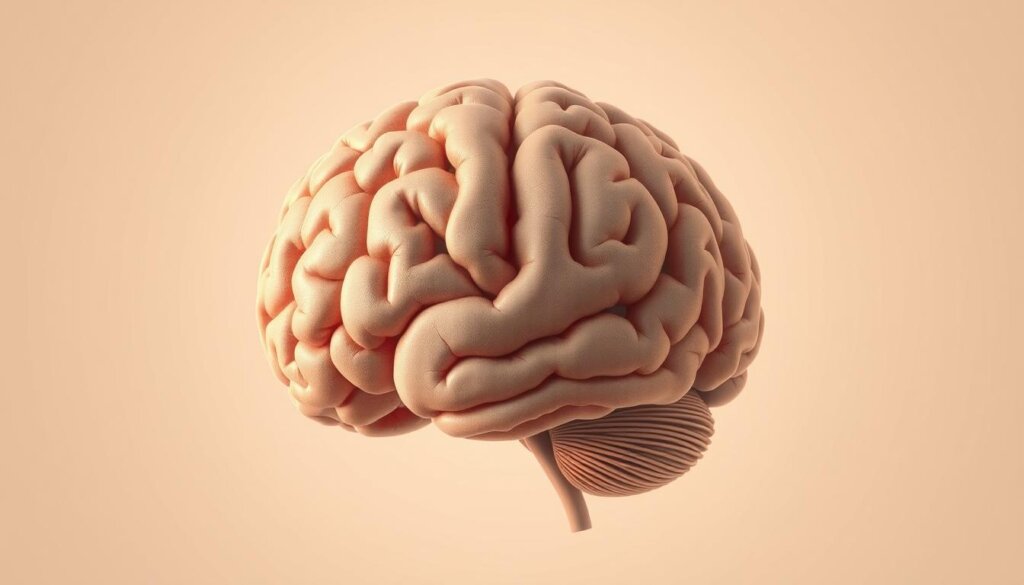
Mood, anxiety and cytokine trends
Human data: a four-week trial reported better mood and less anxiety after daily use. In a panic disorder study, patients who drank 1500 mL/day for three months alongside psychotherapy showed significant falls in IL-6, IL-1β, IL-12, and TNF-α.
Clinical outcomes sometimes matched placebo plus therapy, but the cytokine drops hint at a systemic anti-inflammatory effect that may support mental health and daytime energy.
Neuroprotection and practical notes
Preclinical models show inhibition of NF-κB and NLRP3 pathways, plus selective antioxidation in neural tissue. These mechanisms fit reductions in neuroinflammation seen after injury and in degenerative models.
- Complementary role: this approach should support—not replace—standard psychological or medical therapy.
- Track it: monitor mood, sleep, and simple biomarkers if available during a trial period.
- Talk to providers: discuss use with mental health clinicians to fit therapy plans in Malaysia.
Takeaway: emerging human and preclinical evidence suggests potential quality-of-life gains for brain health, especially when combined with proven treatments and consistent handling to preserve dissolved gas.
Exercise, recovery, and performance for aging actively
Midlife athletes often focus on clearer recovery and steady endurance rather than marginal gains. Small trials report consistent effects on fatigue and lactate when a pre-exercise dose is used.
One seven-day nano-bubble study improved anaerobic output in trained cyclists. Other trials show lower blood lactate and better ventilatory efficiency when hydrogen-rich water is taken before exercise. A crossover in runners found mixed results: slower runners gained (~+1.3%) while faster runners saw unclear effects.
What this means for active older adults: benefits tend to be larger in less-trained individuals. In youth athletes, two months of intake reduced MDA, IL-1, IL-6, TNF-α and raised SOD and total antioxidant capacity, matching faster recovery.
- Take hydrogen-rich water 15–30 minutes pre-workout for lactate and ventilatory gains.
- Track heart rate, split times, and sleep to judge true function changes.
- Use it with solid hydration, protein timing, and active recovery—don’t replace training quality.
- Choose products that deliver verified dissolved gas and keep safety in mind; tolerance is generally good for aging adults.
Oral and periodontal aging: gum health, bone, and oxidative damage
Periodontal health often shows the first visible signs of biological wear as people age. The mouth reflects both local and systemic changes that affect comfort and function.
Study data from a rat aging model found that long-term drinking of hydrogen-rich water lowered mitochondrial 8-OHdG in periodontal tissue. Serum 8-OHdG rises were blunted compared with distilled water controls.
Fewer TRAP-positive osteoclasts and less alveolar bone loss appeared in the hydrogen group, although bone mineral density did not differ. Gene expression changes were mixed: NF-κB downregulated, NLRP3-related genes increased, and IL-1β protein stayed stable.
Takeaways for readers:
- Practical concern: oxidative mtDNA damage links to gum inflammation and cell stress.
- Animal evidence suggests reduced periodontal DNA oxidation and lower osteoclast activity with long-term hydrogen-rich water intake.
- Effects seem to reflect turnover and immune modulation rather than raw bone density gains.
- Pair any trial with good oral hygiene and regular dental checks; consult a dentist for gum issues.
Cancer-care adjunct research: quality of life and treatment synergy
Preclinical and review data indicate potential benefit when hydrogen-rich water is added to standard cancer treatment.
In colorectal models, combining hydrogen-rich water with 5-fluorouracil reduced tumor size, fibrosis, and collagen more than 5-FU alone. These findings suggest a therapy synergy that may enhance tumor control metrics in lab settings.
A systematic review of molecular hydrogen adjunctive use in oncology reported better treatment tolerance, signals of improved prognosis, and higher quality life scores in small human reports. Authors stressed that robust clinical trials are still needed.
Practical points for patients and clinicians:
- Use hydrogen-rich water as a supportive adjunct, not a replacement for standard therapy.
- Discuss integration with the oncology team before starting; timing near chemotherapy matters.
- Track side effects, energy, and routine labs to judge any effects during treatment.
- Consider potential liver protection and lowered oxidative burden as plausible mechanisms.
“Adjunct use may reduce fatigue, nausea, and oxidative stress during intensive regimens.”
Patients in Malaysia seeking product guidance or hospital-friendly options can contact Wellness Group for tailored advice and safety checks before adding hydrogen-rich water to supportive care.
Safety, dosing, and who might consider hydrogen-rich water
Practical rules on dose, timing, and safety help people try drinking hydrogen-rich regimens with confidence.
Typical intake in human trials ranged from about 1.5–2.0 L per day, usually split across the day. Some liver studies used 1200–1800 mL twice daily for targeted support.
Tolerance is generally good. Reported trials show no cytotoxicity at studied ranges and measurable effects at low concentrations. Still, product choice affects actual delivered dose, so follow device or tablet instructions closely.
Who should consult a clinician first
- Patients who are pregnant or breastfeeding should talk with their doctor before use.
- Anyone on dialysis, undergoing cancer therapy, or with multiple medications needs medical advice.
- People with complex chronic disease should get tailored guidance to avoid interactions.
“Start moderate, watch energy, sleep, and digestion, and report changes to a clinician as needed.”
| Topic | Practical tip | Why it matters |
|---|---|---|
| Starting dose | Begin 500–1000 mL/day, increase to 1.5–2.0 L | Checks tolerance and personal response |
| Concentration | Follow device/tablet specs; consume soon after prep | Dissolved gas dissipates with time and agitation |
| Timing | Around meals or 15–30 min pre-exercise | May align benefits with digestion or recovery |
Local help: Malaysians can get dosing and product advice via WhatsApp: +60123822655. Hours: Mon–Fri 9:30 am–6:30 pm; Sat–Sun 10 am–5 pm.
How to choose and use hydrogen water in daily life
Small handling details often determine whether dissolved gas levels stay high enough to have an effect. Proper choices make routine use practical for busy Malaysians.
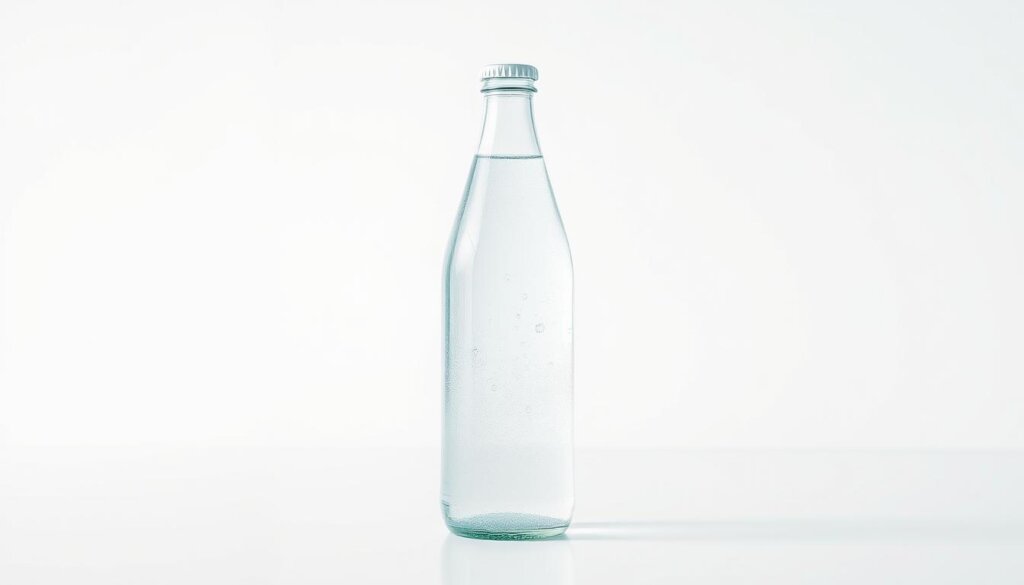
Generators, tablets, and storage
Generators suit home use and family servings. Check maintenance needs, dissolved H2 specs, and safety certifications before buying.
Tablets are portable and ideal for the office or travel. Look for verified concentration claims and clear instructions.
Preserve dissolved gas: prepare close to consumption, keep bottles sealed, avoid heat and shaking, and use closed containers to slow dissipation.
Timing with exercise and meals
For fatigue and lactate benefits, take a dose 15–30 minutes pre-workout. Studies show ventilatory and recovery gains with this approach.
Spread daily intake around meals to support metabolic function and endothelial adaptation seen with regular use. Consistency matters more than occasional high doses.
- Starter protocol: morning dose for energy, pre-exercise dose, early evening dose for recovery.
- Synergy: pair with protein or polyphenol-rich meals but avoid hot drinks that accelerate off‑gassing.
- Logging: track BP, resting HR, sleep, mood, and stamina to judge effect.
“Choose trusted products and prepare drinks shortly before use to preserve dissolved levels and support real-world function.”
Need brand or device help? Message Wellness Group on WhatsApp: +60123822655 (Mon–Fri 9:30 am–6:30 pm; Sat–Sun 10 am–5 pm) for local recommendations and setup support in Malaysia.
Wellness Group Malaysia: guidance, availability, and support
Local support makes trying new health routines easier, and Wellness Group aims to simplify decisions for busy households in Malaysia.
Personalized recommendations for Malaysians
Wellness Group offers tailored advice on choosing between home generators and portable tablets. They factor in budget, kitchen space, and daily routines like work shifts or prayer times.
Contact Wellness Group on WhatsApp: +60123822655
Message for quick, friendly responses about dosing, device care, and verification of product specs. They help coordinate use alongside medical treatment for patients and therapy plans when needed.
Business hours
Mon–Fri 9:30 am–6:30 pm; Sat–Sun 10 am–5 pm.
Services include:
- Timing plans matched to workouts, fasting, or travel.
- Stock updates for reputable brands available locally.
- Troubleshooting: filters, maintenance, and concentration checks.
- Periodic check-ins to refine protocols for life events like Ramadhan or race prep.
| Service | What they do | Why it helps |
|---|---|---|
| Product selection | Compare generators vs tablets | Match quality and budget to home needs |
| Usage plans | Schedule doses around daily life | Improve adherence and measurable outcomes |
| Clinical coordination | Advise integration with treatment | Protect safety for patients on therapy |
For specific skin guidance and routine tips, see this skin-care article or message +60123822655 for personalised help.
Conclusion
, This short conclusion pulls practical findings together for Malaysians who want clear next steps.
The article finds that regular use of hydrogen-rich water shows consistent drops in oxidative stress markers and rises in antioxidant capacity in small trials. Signals span metabolic, vascular, liver, brain, oral health, exercise recovery, and quality-of-life measures.
One pilot study reported a ~4% telomere rise over six months, but larger trials are needed to confirm long-term effects. Readers should treat this approach as an adjunct to nutrition, movement, sleep, and medical care, not a replacement for treatment.
Choose verified products, handle drinks properly, and track simple metrics over weeks. For personalised guidance and reputable local options, message Wellness Group on WhatsApp: +60123822655 (Mon–Fri 9:30 am–6:30 pm; Sat–Sun 10 am–5 pm).
FAQ
What is hydrogen-rich water and how does it differ from regular or alkaline water?
Hydrogen-rich water is ordinary drinking water infused with dissolved molecular hydrogen gas. It differs from alkaline water, which alters pH, while hydrogen-rich water delivers dissolved H2 that may act as a selective antioxidant and signaling modulator without changing acidity.
Can drinking hydrogen-rich water reduce oxidative stress linked to aging?
Some trials and preclinical studies report reductions in oxidative stress markers such as 8‑OHdG and MDA after short- to medium-term use. Evidence suggests H2 can neutralize highly reactive radicals and modulate antioxidant pathways, which may lower cellular oxidative damage associated with aging.
Is there strong human evidence that it slows biological aging or extends lifespan?
Human data remain preliminary. Small clinical trials and observational reports show improvements in biomarkers, metabolic measures, and quality of life, but large, long-term randomized controlled trials on lifespan or clear antiaging endpoints are lacking.
How might molecular hydrogen affect mitochondria and inflammation?
Molecular hydrogen appears to reduce mitochondrial reactive oxygen species production, support mitochondrial function, and downregulate proinflammatory pathways such as NF-κB and NLRP3. These actions may help preserve cellular energy and reduce inflamm-aging.
Are there specific markers that improve with H2 intake?
Trials report changes in oxidative stress markers (8‑OHdG, TBARS), antioxidant capacity, some lipid and glucose parameters, and subjective fatigue or wellbeing scores. Results vary by population and study design.
What dosing and formats have studies used: generators, tablets, or bottled products?
Research used dissolved H2 concentrations typically from 0.5 to 1.6 ppm, delivered via machines, tablets, or pre-filled bottles. Typical daily intakes ranged from 0.5 to 2 liters or several tablets; tolerability was good across studies.
Is it safe and who should consult a clinician first?
Drinking hydrogen-rich water has shown a favorable safety profile in trials. People on complex medical treatments, pregnant or breastfeeding women, and those with serious illnesses should consult a clinician before starting any adjunct therapy.
Could it help metabolic syndrome, glucose control, or cardiovascular risk?
Some studies report modest improvements in fasting glucose, insulin resistance markers, and lipid profiles. Endothelial function and HDL-related signals showed potential benefits in select trials, but findings are not definitive for broad clinical recommendations.
Are there organ-specific benefits for liver, kidney, or dialysis patients?
Research indicates potential reductions in oxidative burden and symptom improvement in chronic liver conditions and dialysis-related fatigue. Evidence is preliminary and should be interpreted alongside standard medical care.
How about brain health, mood, and neuroprotection?
Early studies suggest improvements in mood, reduced cytokine trends, and neuroprotective effects in animal models. Human neurocognitive and psychiatric data are limited but encouraging for further research.
Can athletes and older adults expect better recovery or less fatigue?
Trials in athletes show reduced muscle fatigue and faster recovery markers; similar signals appear in middle‑aged and older adults for endurance and subjective fatigue. Results depend on dose, timing, and individual fitness levels.
What is known about telomeres, senescence, and epigenetic effects?
Small studies have explored telomere length and senescence markers with mixed results. Some suggest modulation of sirtuin activity and epigenetic signaling, but evidence is too limited to draw firm conclusions.
Does it affect oral health, periodontal disease, or bone loss?
Preliminary research links reduced oxidative damage in periodontal tissues and potential benefits for gum health and bone loss markers. Larger dental studies are needed to confirm clinical impact.
Could it support cancer care or quality of life during treatment?
Some adjunct trials report improved quality of life and reduced treatment-related oxidative stress. Hydrogen-rich water is not a cancer treatment but may be explored as supportive care under oncology guidance.
How should consumers choose and store hydrogen-rich products?
Choose reputable generators or sealed bottles with verified dissolved H2 concentration and preserve the gas by minimizing headspace, avoiding prolonged storage, and keeping products cool and opaque when possible.
What keywords and topics should Malaysians look for when researching this therapy?
Useful search terms include molecular hydrogen, reactive oxygen species, oxidative stress, metabolic syndrome, mitochondrial protection, Nrf2, NF‑κB, dialysis fatigue, quality of life, and Wellness Group Malaysia for local guidance.
How can someone contact Wellness Group Malaysia for personalized advice?
Wellness Group Malaysia offers recommendations and product support. Contact via WhatsApp at +60123822655 during business hours: Mon–Fri 9:30 am–6:30 pm and Sat–Sun 10 am–5 pm.


